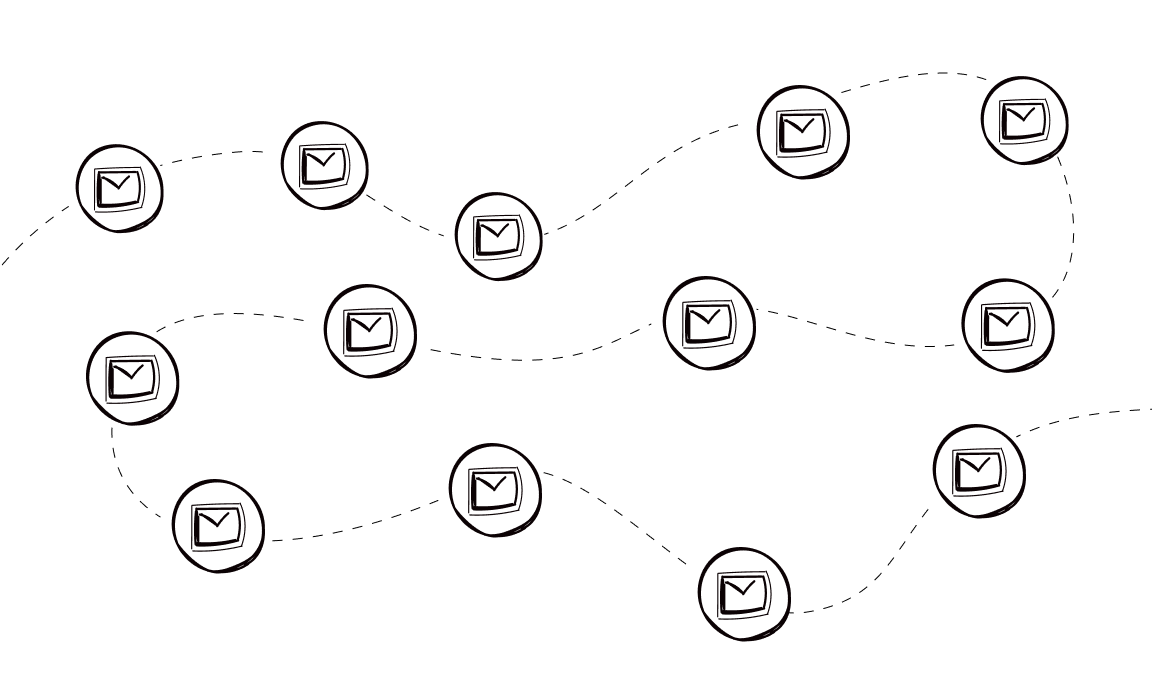Crafting a sales email sequence is like setting the rhythm for a perfect dance. Each step must flow seamlessly, guiding your audience from curiosity to commitment. Whether it’s a cold email sequence or a nurture email sequence, understanding the nuances of timing, messaging, and audience pain points is key. Let’s dive into the pillars that make a killer sales email sequence that converts.
7 pillars of great sales email sequences
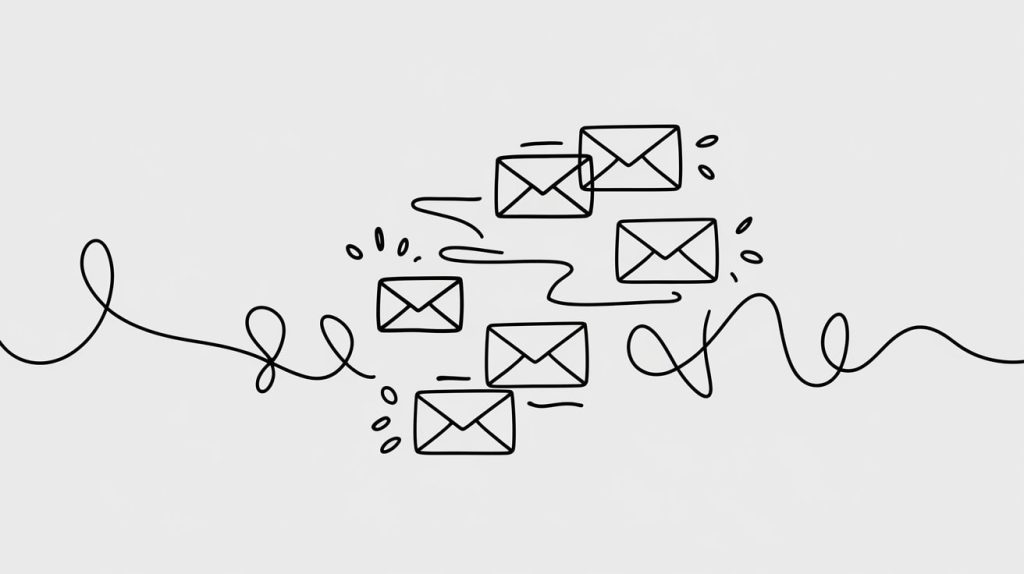
A sales email sequence can make or break your marketing strategy. Think of it as a carefully plotted journey where each email builds trust, engagement, and urgency. From welcome sequences to re-engagement campaigns, mastering these pillars ensures your email marketing is not just automated but optimized.
#1 Clear understanding of your target audience
To create an email sequence that resonates, you need to deeply understand your target audience’s needs, challenges, and goals. Knowing their job titles, pain points, and decision-making process ensures that each email in your sequence feels personalized and relevant. Skip generic messaging; focus instead on content that delivers immediate value. Use your email marketing software to segment and tailor emails based on behavior, preferences, and previous interactions.
#2 Compelling subject lines that grab attention
The subject line is the first thing your audience sees and determines whether your email gets opened or ignored. A killer subject line creates curiosity while highlighting your value proposition. Avoid clickbait and focus on being concise and clear. Use tools to test subject lines and analyze open rates to refine your approach. Whether it’s a cold email or a follow-up email sequence, a strong subject line sets the tone for success.
#3 Personalization beyond the name
Generic templates won’t cut it anymore. Sales reps must use details like previous email interactions, lead magnets downloaded, or even the recipient’s company achievements. This level of personalization builds rapport and demonstrates genuine interest. For automated email sequences, use dynamic tags and triggers to customize each email, making your sequence feel human and engaging.
#4 Educational content that builds trust
Every email sequence should deliver valuable content that addresses your audience’s questions and pain points. Educational content like relevant blog posts or guides nurtures leads and positions you as an authority in your field. A lead nurturing email sequence thrives on this approach, gradually guiding recipients through the sales funnel while solving their challenges.
#5 Strategic timing and consistency
Timing is everything in email marketing. Whether you’re sending a welcome email sequence to new customers or a re-engagement email sequence to inactive subscribers, consistency keeps your audience engaged. Use email marketing automation tools to schedule follow-ups, ensuring no lead falls through the cracks. Strike a balance between frequent touchpoints and giving enough breathing room for decision-making.
#6 Strong call-to-actions (CTAs)
A sales email sequence should guide recipients toward a clear action, whether it’s booking a calendar link, visiting a particular page, or downloading an ebook. CTAs should be clear, actionable, and placed strategically within the email. Keep the language persuasive yet direct to maximize conversions in your email campaigns.
#7 Data-driven optimization
Analyzing important metrics like open rates, click-through rates, and conversions is essential for improving your email sales sequence. Use email marketing software to track performance and tweak elements like subject lines, content, and timing. A/B testing allows you to refine your strategy, ensuring every sequence—whether a cold email or nurture sequence—delivers better results over time.
Best sales email sequence templates for you to follow
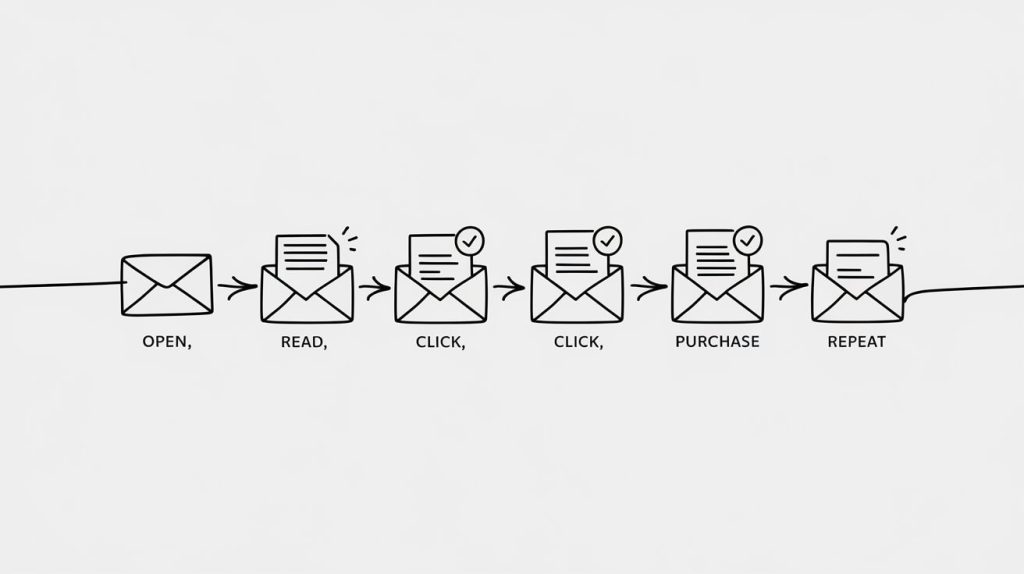
Personalized opening that shows you’ve done your homework
“Hi [First Name], I noticed your team at [Company Name] has been tackling [specific challenge or goal], and I thought this resource could help.”
Why it works: This opening instantly connects with the recipient by demonstrating you’ve taken the time to understand their specific context. By mentioning their team, company, or a known challenge, you make the email feel tailored, not generic. This approach is particularly effective in cold email sequences or lead nurturing email sequences, as it builds trust and grabs attention right away.
How to personalize: Dive into publicly available information about the recipient’s company—recent press releases, LinkedIn posts, or even industry trends they might be grappling with. Replace [specific challenge or goal] with something actionable, like “expanding into new markets” or “streamlining workflows,” ensuring it aligns with their role or business focus. This kind of personalization showcases your attention to detail and positions you as a resourceful and credible partner.
Pro tip: Use tools like email marketing automation software to pull in dynamic fields for [First Name] and [Company Name], and align [specific challenge or goal] with segmented pain points based on job title or industry. This small step can make your email opening highly effective across multiple audiences.
Attention-grabbing subject line that sparks curiosity
“Struggling with [specific pain point]? Here’s how [Your Solution] can make a difference.”
Why it works: This subject line addresses a key pain point directly, piquing curiosity and inviting the recipient to learn more. It also signals immediate value, increasing the likelihood of the email being opened. Whether it’s the initial email in a cold email sequence or the third email in a conversion sequence, a strong subject line sets the tone for engagement.
How to personalize: Identify a common challenge relevant to the recipient’s industry, role, or segment. For example, in an onboarding email sequence for sales teams, the subject could read, “Struggling with onboarding new reps? Here’s how to speed it up.” Tailor the [specific pain point] to align with the recipient’s current stage in the sales process.
Pro tip: Test variations of this subject line using email marketing automation tools to optimize open rates. For example, compare “Struggling with onboarding?” to “Speed up your team’s onboarding process” to see which resonates better with your audience.
Follow-up email that keeps the conversation alive
“Hi [First Name], just circling back to see if [specific action] would help with [specific goal].”
Why it works: This follow-up sequence email is polite, professional, and direct. It reminds the recipient of your previous email without being pushy. By tying the follow-up to a specific goal, it repositions your offer as a helpful solution. This is particularly effective for lead nurturing sequences or abandoned cart email sequences, where re-engagement is key.
How to personalize: Reference the action from your previous email (e.g., scheduling a demo, reviewing a proposal) and tie it to the recipient’s business goals. For instance, in a sales process context, it could read, “Just circling back to see if scheduling a quick demo would help streamline your sales team’s workflows.”
Pro tip: Use email marketing sequences to automate follow-ups based on recipient behavior, such as not opening the initial email or clicking on a particular page. Timing the follow-up email strategically—48–72 hours after the initial email—can significantly improve response rates.
Conversion-focused email that drives action
“Hi [First Name], ready to [achieve specific goal]? Let’s make it happen today.”
Why it works: This sentence leverages urgency and optimism to encourage immediate action. It’s perfect for a conversion email sequence aimed at nudging leads into becoming paying customers. By emphasizing a specific goal, the email feels focused and actionable rather than generic or overwhelming.
How to personalize: Replace [achieve specific goal] with something highly relevant to your lead’s situation, such as “grow your revenue by 20% this quarter” or “simplify your sales process.” Tailor the goal to the lead’s industry, job title, or stage in your sales funnel.
Pro tip: Place this sentence near the top of your email, paired with a clear CTA like “Book a free demo” or “Get started now.” Use email marketing automation to deliver it as part of a well-timed sequence triggered by behaviors like visiting a pricing page.
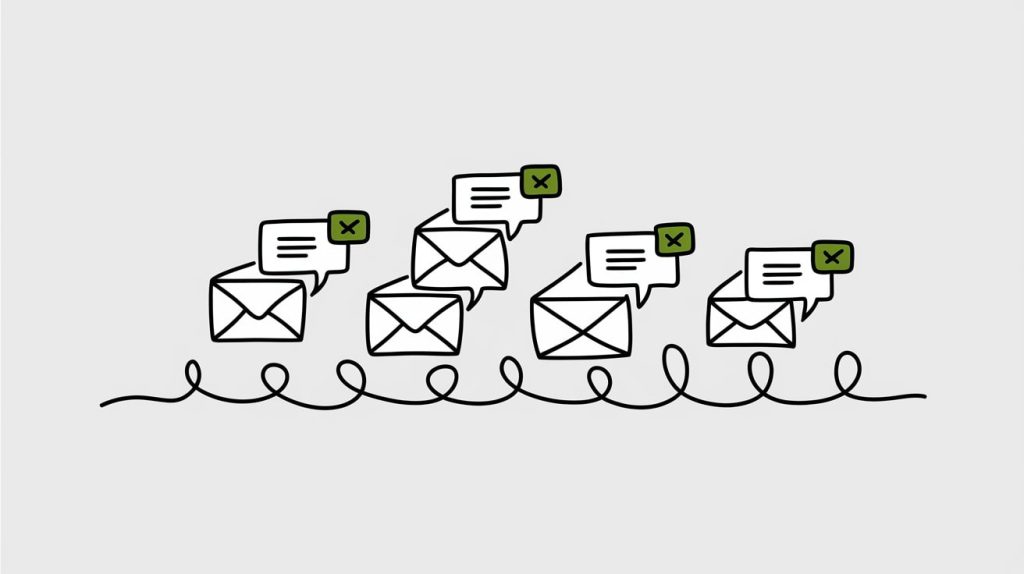
Final email that leaves a lasting impression
“Hi [First Name], I understand timing might not be right, but I’d love to reconnect when it is.”
Why it works: A final email in any email sales sequence should leave the door open for future communication. This sentence shows empathy and professionalism while keeping the conversation alive. It works especially well in automated sequences targeting leads who haven’t converted or engaged yet.
How to personalize: Show understanding by referencing their possible hesitation (e.g., budget constraints, timing issues). For example, “I understand timing might not be right during your busy quarter, but I’d love to reconnect when it is.” This approach softens the ask while demonstrating awareness of their situation.
Pro tip: Include a link to a resource like relevant blog posts or a lead magnet to provide value even as you close the sequence. Use email marketing automation to follow up after a set period, keeping your brand top of mind for when they’re ready to engage.
Onboarding email that delivers immediate value
“Welcome to [Your Company], [First Name]! Here’s everything you need to get started with [specific product or service].”
Why it works: This opening line in a welcome sequence sets a positive tone while immediately directing the recipient toward actionable steps. It ensures that new customers feel supported and empowered to start using your product or service effectively. Delivering immediate value helps reduce churn and builds trust early in the relationship.
How to personalize: Use the recipient’s first name and reference the specific product or service they signed up for. For example, “Here’s everything you need to get started with your [CRM platform] to streamline your sales process.” Highlight features or quick wins tailored to their needs.
Pro tip: Include a link to an onboarding guide, tutorial videos, or a quick-start checklist. Leverage email marketing automation to send this email right after signup to maintain momentum and excitement.
Re-engagement email that revives inactive leads
“Hi [First Name], we noticed you haven’t been using [specific product or feature]—here’s how to get the most out of it.”
Why it works: This re-engagement email sequence targets inactive subscribers or leads, drawing attention to underused features or benefits. It gently reminds them of the value you offer and encourages them to re-engage without being pushy. Perfect for nurturing sequences or abandoned cart email sequences, this approach can reignite interest and move leads further down the funnel.
How to personalize: Reference the specific product or feature they’ve signed up for but haven’t utilized fully. For example, “We noticed you haven’t been using our [email marketing automation] feature—here’s a quick guide to streamline your campaigns.” Tie the benefit directly to their pain points or business goals.
Pro tip: Pair this email with an incentive, such as a free consultation or bonus content, to motivate action. Automated sequences can track inactivity and send this email at the right time, maximizing its effectiveness.
Lead generation email that sparks curiosity
“Looking for ways to generate leads faster? Here’s a strategy that’s working right now.”
Why it works: This sentence captures attention by addressing a core business challenge—lead generation. It promises a timely solution, enticing recipients to open the email and learn more. Whether used in a cold email or part of an automated sequence, this approach positions your message as a valuable resource rather than a hard sell.
How to personalize: Focus on your recipient’s specific industry or pain points. For instance, “Looking for ways to generate leads faster for your SaaS startup? Here’s a strategy that’s working right now.” This personalized touch makes the email feel tailored and relevant to their needs.
Pro tip: Use A/B testing on your email subject line to see which phrasing resonates best with your audience. Incorporate a clear CTA in the email body, such as “Discover how we helped companies like yours boost lead flow by 30%.”
Educational email that builds credibility
“Hi [First Name], did you know there are [number] types of email sequences that can help grow your business?”
Why it works: This sentence creates intrigue by sharing a surprising or lesser-known fact. It positions your email as educational content that offers value while naturally introducing the different types of email sequences you provide. This approach works well in lead nurturing sequences, where the goal is to build credibility and trust.
How to personalize: Adapt the [number] and content focus to fit the recipient’s business. For example, “Did you know there are 5 types of email sequences perfect for generating leads in e-commerce?” This specificity aligns your expertise with their industry.
Pro tip: Include examples of these email sequences in the email body, such as welcome sequences, re-engagement sequences, or conversion sequences. Use email marketing automation to follow up with a deeper dive into one or two sequences based on their engagement.
Conversion email that reinforces value
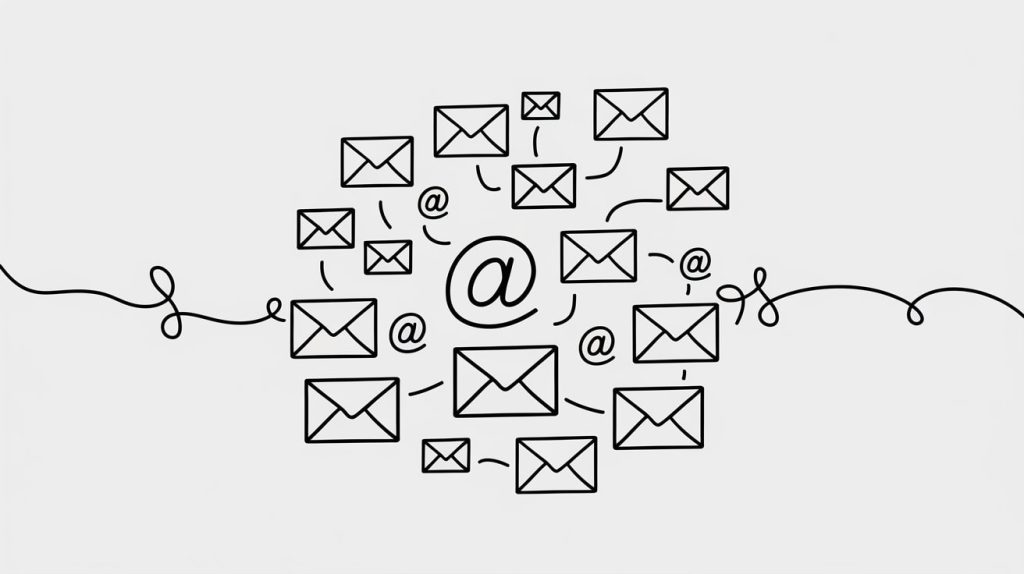
“Hi [First Name], here’s how [Your Product/Service] can help you achieve [specific goal] faster.”
Why it works: This sentence highlights how your product or service directly addresses the recipient’s needs, making it ideal for a conversion email sequence. By focusing on speed and efficiency, it appeals to time-conscious leads who are looking for quick results. It works especially well as part of a third email or final email in an automated sequence.
How to personalize: Replace [specific goal] with something relevant to their business or industry. For example, “Here’s how [Our CRM Platform] can help you close deals faster.” By tying the goal to their pain points, you show you understand their challenges and have a solution.
Pro tip: End the email with a clear CTA, such as “Schedule a demo today” or “Start your free trial now,” to capitalize on their interest. Use email marketing automation to send this at the right time, such as after they’ve engaged with a previous email or visited a pricing page.
Follow-up email that overcomes objections
“Hi [First Name], I wanted to follow up and address any questions you might have about [Your Product/Service].”
Why it works: This follow-up email sequence focuses on addressing potential objections, showing you’re proactive and willing to assist. It keeps the conversation open and encourages recipients to voice concerns or seek clarification, which can help move them closer to conversion.
How to personalize: Reference previous interactions or emails to make the follow-up feel more relevant. For example, “I wanted to follow up on our last conversation and address any questions you might have about implementing [Our Automated Sequences] into your sales process.” This demonstrates attentiveness and builds trust.
Pro tip: Include a link to an FAQ page, a relevant blog post, or your calendar link for a quick call to make it easy for them to engage. Timing is key—send this within 48 hours of their last interaction or after they’ve opened a previous email but haven’t responded.
Welcome email that sets expectations
“Welcome to [Your Company], [First Name]! Here’s what to expect and how to get started today.”
Why it works: A welcome sequence is a crucial touchpoint for new customers. This sentence immediately conveys excitement and clarity, setting the stage for a smooth onboarding experience. It works well in automated sequences, helping recipients feel confident and supported right from the start.
How to personalize: Mention the specific product, service, or type of experience they’ve signed up for. For example, “Here’s what to expect and how to get started with your [CRM platform].” Include links to onboarding resources or quick-start guides to offer immediate value.
Pro tip: Use email marketing automation to trigger this email immediately after signup. Pair it with a follow-up sequence that introduces them to advanced features or tips over the next few days.
Abandoned cart email that reignites interest
“Hi [First Name], we noticed you left [specific product] in your cart—here’s why it’s perfect for you.”
Why it works: This sentence re-engages potential customers by directly referencing their actions and highlighting the value of what they left behind. It’s ideal for an abandoned cart email sequence, as it gently nudges the recipient to complete their purchase without sounding overly pushy.
How to personalize: Use dynamic fields to mention the exact product or service they added to their cart. For example, “We noticed you left [Marketing Automation Toolkit] in your cart—here’s why it’s perfect for streamlining your campaigns.” Add urgency with phrases like “before the discount expires” to encourage quicker action.
Pro tip: Include a CTA leading back to their cart or offering assistance, like “Have questions? Reply to this email, and we’re happy to help.” Automated sequences should time this email within a few hours of cart abandonment for maximum impact.
Re-engagement email that sparks curiosity
“Hi [First Name], it’s been a while—ready to see what’s new at [Your Company]?”
Why it works: This re-engagement email leverages curiosity to reconnect with inactive subscribers or leads. By emphasizing updates or new features, it invites the recipient to revisit your brand and re-engage with your offerings. It’s especially effective in re-engagement email sequences targeting dormant users.
How to personalize: Reference how long it’s been since their last interaction or highlight a new feature, product, or service that aligns with their interests. For example, “It’s been a while since we last connected—ready to see our newest tools for generating leads?”
Pro tip: Include links to recent blog posts, product updates, or a lead magnet to provide value immediately. Timing is key—send this email after a period of inactivity, like three to six months, and follow it up with a nurture sequence to keep them engaged.
Follow-up email that nurtures leads
“Hi [First Name], I wanted to share a quick resource that might help with [specific pain point or goal].”
Why it works: This follow-up email adds value by offering a resource tailored to the recipient’s needs, showing you’re focused on helping rather than selling. It works well in a lead nurturing sequence, keeping the conversation alive and building trust.
How to personalize: Reference the specific pain point or goal you’ve identified in previous interactions. For example, “I wanted to share a quick guide that might help streamline your sales process.” Use insights from their behavior, like visiting a particular page or downloading a lead magnet, to make the email feel relevant.
Pro tip: Link to a downloadable guide, relevant blog post, or video tutorial. Use automated sequences to send this after an initial email has been opened but no further action has been taken.
Conversion email that emphasizes urgency
“Hi [First Name], [special offer or deadline] is ending soon—don’t miss your chance to [achieve specific benefit].”
Why it works: This email uses urgency to push leads toward conversion. By focusing on a specific deadline or limited-time offer, it creates a sense of FOMO (fear of missing out), which is highly effective in a conversion email sequence.
How to personalize: Highlight a benefit that aligns with their goals, like “Don’t miss your chance to save 20% on tools that simplify your email marketing automation.” Mention specific dates or timeframes to make the urgency tangible.
Pro tip: Pair this email with a bold CTA, such as “Claim Your Discount Now.” Automated sequences should send this as a final email in the series to create a last-minute push toward conversion.
Engagement email that drives interaction
“Hi [First Name], what’s your biggest challenge right now with [specific topic]? I’d love to hear your thoughts.”
Why it works: This email encourages engagement by asking a question that invites the recipient to share their thoughts or pain points. It’s perfect for an engagement email sequence, as it fosters a two-way conversation and helps you gather valuable insights.
How to personalize: Tailor the question to their industry or role. For example, “What’s your biggest challenge right now with generating leads?” This makes the email feel relevant and personal, increasing the likelihood of a response.
Pro tip: Use the responses to refine your email campaigns and offer tailored solutions in follow-up emails. Automated sequences can segment recipients based on their answers, delivering more targeted content in future emails.
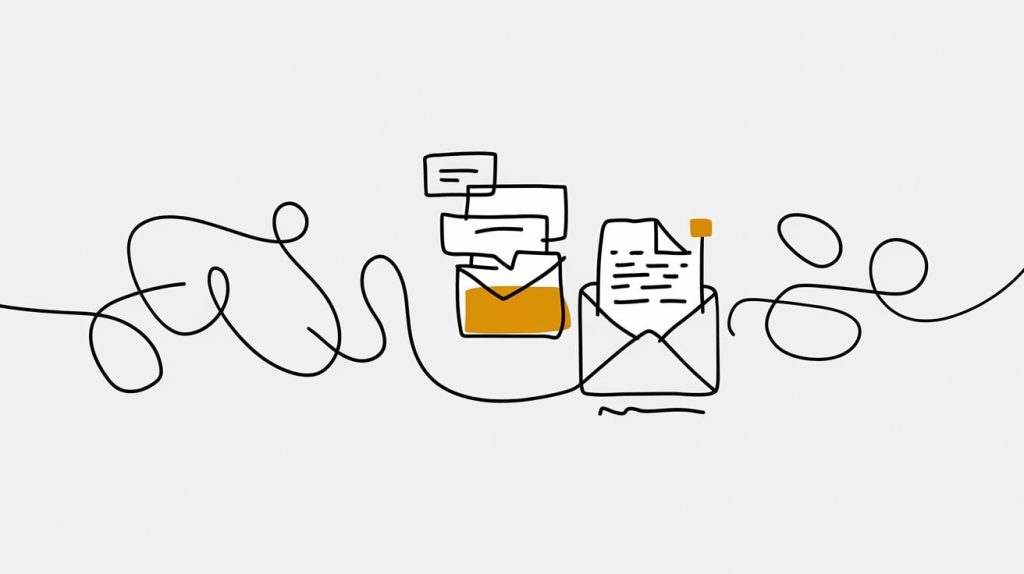
Educational email that builds trust
“Hi [First Name], here’s a quick guide to help you [solve specific problem or achieve specific goal].”
Why it works: This email positions you as a helpful resource, offering valuable content that addresses your recipient’s challenges. It’s an excellent choice for nurturing email sequences, as it educates and builds trust without directly selling.
How to personalize: Reference a known pain point or goal relevant to the recipient’s industry or role. For example, “Here’s a quick guide to help you generate leads faster.” Tailor the guide to their specific needs for maximum impact.
Pro tip: Use email marketing automation to send this email as part of a series, following up with additional resources or success stories to keep the engagement flowing.
Final email that offers a parting incentive
“Hi [First Name], before we close the loop, here’s a [special offer or exclusive resource] to help you decide.”
Why it works: This sentence adds a final push to encourage action while leaving a positive impression. It works well in conversion sequences where leads haven’t yet converted, giving them one last reason to engage with your offer.
How to personalize: Include an incentive that aligns with their interest, such as a free trial, discount, or exclusive case study. For example, “Here’s a 15% discount to help you get started with our automated sequences.”
Pro tip: Make the offer time-sensitive to create urgency. Automated sequences can send this email a few days after no action has been taken from previous follow-ups.
Cold email that piques interest
“Hi [First Name], I’ve been following [specific activity or achievement], and I think [Your Product/Service] could help you [achieve specific goal or solve a challenge].”
Why it works: This email demonstrates genuine interest in the recipient’s work and connects it to your offering, making it highly effective for cold email sequences. It establishes relevance right from the start and positions your email as a personalized solution.
How to personalize: Reference a specific activity, such as a recent product launch, industry recognition, or company milestone. For example, “I’ve been following your team’s new product launch, and I think our email marketing automation tool could help you generate more leads.”
Pro tip: Keep the tone conversational and the email concise. End with a clear CTA, such as scheduling a call or providing a calendar link for easy next steps. Automated sequences can follow up with more details if this email sparks interest.
Conclusion
Creating effective email sequences is not just about sending emails—it’s about crafting meaningful interactions that guide your audience through their journey. Whether you’re focusing on lead nurturing, re-engagement, or conversion email sequences, every message should deliver value, address pain points, and inspire action. By leveraging personalization, compelling subject lines, and strategic timing, you can transform your email campaigns into powerful tools that drive engagement and results.
With the right approach, email marketing becomes more than just automation—it becomes a conversation that builds trust, nurtures relationships, and converts leads into loyal paying customers. Start implementing these strategies today and watch your sales email sequences elevate your marketing game.

